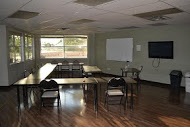
We at Honolulu CPR offer students a wide range of quality courses at the most affordable rates in Hawaii. There are basic and advanced programs offered through the week, as well as re-certification classes. Only certified trainers teach our CPR classes so trainees can rest assured of the quality of training they receive. You can find more details regarding programs and schedules on our Honolulu CPR website.
Regarding enrollment and sign-up
Enrollment is quick and easy with Honolulu CPR. There are several ways to enroll aside from visiting our location in person. The website has an online application form you can fill up, as well as our contact details if you want to sign up through e-mail or telephone call. No other provider in Hawaii offers easier methods to sign up for CPR training.
CPR: The nitty gritty
The American Heart Association trains millions of rescuers each year in CPR but only 36 percent of out-of-hospital cardiac arrest receive CPR from a bystander. According to a survey, 77 percent of the respondents said the would feel helpless to act during an emergency. This is quite alarming because over 384,000 arrests happen each year, with 88 percent happening at home. When a person trains in CPR, he or she is taught how to react and manage cardiac arrest. Cardiac arrest is a term used to describe a condition where the heart stops beating. This can be due to a preexisting cardiac problem or a problem with electrical conduction in the heart. Fatty deposits and their effect on the heart Pre-existing cardiac problems such as hypertension or athero/arteriosclerosis can cause poor blood flow to the heart and cause it to stop. Hypertension is high blood pressure, which usually happens when fat builds up in our blood vessels, a condition called atherosclerosis. When vessels spasm and become narrow, it is called arteriosclerosis. Both of these conditions cause decreased blood flow to cardiac muscle which causes tissue death, an irreversible process which leads to a heart attack. A problem with electrical conductivity Because the heart is a muscle, it functions or moves because of electrical signals that are sent from the brain. These signals travel through different nodes in the heart, causing certain parts (valves and chambers) to contract and relax. However, when electrical signals are conducted poorly, the heart can experience irregular rhythm (arrhythmia) and stop beating entirely. Sometimes, when only one node is affected, only a certain part of the heart stops working.
Our programs for CPR Course in Honolulu
At Honolulu CPR, you have a choice of eight training programs. The breakdown of these programs are as follows, ranging between four and sixteen total class hours.
- Basic CPR/AED (Heartsaver) – 4 hours
- Basic CPR/AED for healthcare providers (Heartsaver C) – 4.5 hours
- Basic Life Support for HCPs – 4.5 hours
- Basic Life Support for HCPs re-certification – 4 hours
- Advanced Cardiac Life Support (ACLS) – 16 hours in 2 days
- ACLS re-certification – 5 to 6 hours
- Pediatric Advanced Life Support (PALS) – 14 hours in 2 days
- PALS re-certification – 6 hours and 20 minutes / 8 hours and 20 minutes
